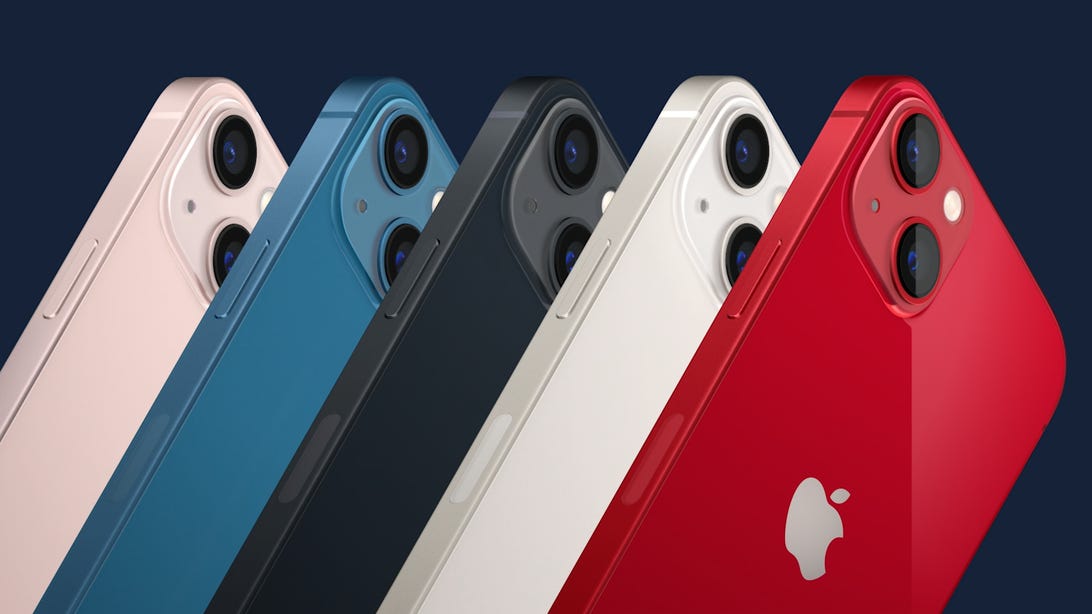
Meet the new phone, kinda same as the old phone.
AppleA decade ago, Tim Cook got on stage at Apple's headquarters, ready to lead his first event as the company's new CEO. He was about to announce the iPhone 4S, which superficially seemed identical to the iPhone 4. Apple even signaled its lower enthusiasm by skipping the usual pomp of a massive hall filled with thousands of developers, partners and journalists, instead choosing the more intimate 300-seat on-campus Town Hall venue.
Still, Cook was undeterred. "It's an extraordinary time to be at Apple," he said at the start of the event. "Today, we'll remind you of the uniqueness of this company."
Less than a week after that, the company said it had received 1 million orders for the iPhone 4S in its first 24 hours on sale, compared with the 600,000 for the iPhone 4. The iPhone 4S went on to more than double its predecessor's opening weekend sales.
Ten years later, Apple finds itself in a similar spot with the iPhone 13, announced Tuesday at Apple's September event.
The device is a followup to last year's major redesign for the iPhone 12. And unlike the iPhone 4S, whose new Siri voice assistant became a media darling in part for its corny jokes -- "Two iPhones walk into a bar..." -- the iPhone 13 looks virtually identical to the prior iteration and focuses on incremental improvements to features like the camera and battery life.
In any other company's hands, this could be a shrug-worthy release. But at Apple, it's part of a formula of successful iPhone launches that draw throngs of customers. A decade ago, critics called it the "reality distortion field," the seeming magic that Apple co-founder Steve Jobs had that made people lust after his company's products. After all this time, the bit of magic that elicits interest and conversation still exists, even if the enthusiasm has waned.
"The company is offering enough new features to fuel consumer demand," Ben Wood, an analyst at CCS Insight, wrote in an analysis of the event. "Apple has a proven and profitable approach that it appears capable of sustaining for a long time."

LG's Wing offered an unusual take on the smartphone.
Angela Lang/CNETIronically, that perception of magic is supported by an incremental and, arguably, boring upgrade path with few major leaps in technology. Yet it has won out against rivals that have tried everything from taking on the iPhone straight with flagships like the Galaxy S21 to wacky new ideas like the LG Wing or Samsung Galaxy Z Fold line.
The iPhone 13, by comparison, isn't largely different from the iPhone 12, iPhone 11 or iPhone 10 in terms of its size and function. It's faster, to be sure, and it offers better cameras. The iPhone 13 Pro boasts a 3X optical zoom, but that's just an improvement of an existing feature.
It lacks the tricks or gee-whiz futuristic appeal of the Samsung Galaxy Z Fold 3, but Moor Insights and Strategy analyst Patrick Moorhead said it doesn't matter much to phone buyers, when few companies are innovating on the tried and true design of a glass screen on a metal body.
"Smartphones are mature, and in a country where there isn't a tremendous amount of innovation outside Samsung, people say, eh, this is good enough," he said.
Not much change
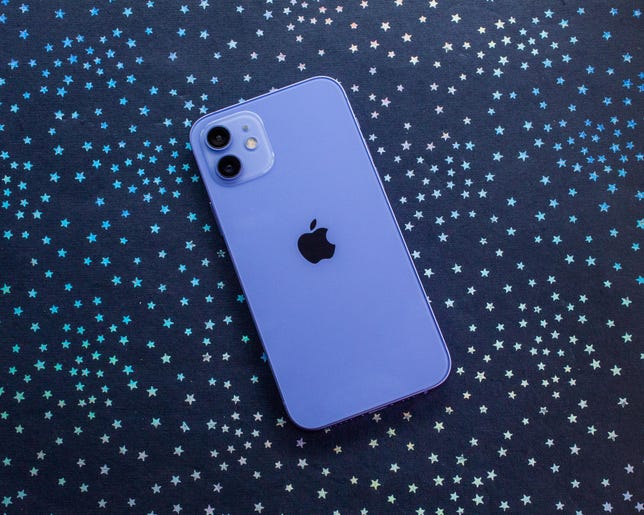
Pop quiz: Is this an iPhone 12 or iPhone 13?
Sarah Tew/CNETAt first blush, it would be difficult to discern any outward differences between the iPhone 13 and its predecessor. There is one, a slightly (20%) slimmer notch at the top that you wouldn't really notice unless you stacked up an older iPhone next to it. The iPhone 13's two camera lenses are stacked diagonally versus the iPhone 12 placing one on top of the other.
Oh, there's a new color: pink.
Rather than dwell on looks, Apple spent the bulk of its time talking about the camera, including a new Cinematic Mode with adjustable focus and a number of new computational photography tricks to help with movies, low-light photos and image stabilization.
While Apple fans and the media may knock Apple for the incremental changes, most consumers looking to upgrade from a 2- or 3-year-old iPhone will likely be happy. For them, this will be a huge upgrade in processing speed, screen quality, battery life and camera quality.
"While none of this is groundbreaking, it combines to create a dramatically better experience for consumers who are upgrading after two to four years," said Avi Greengart, an analyst at Techsponential.
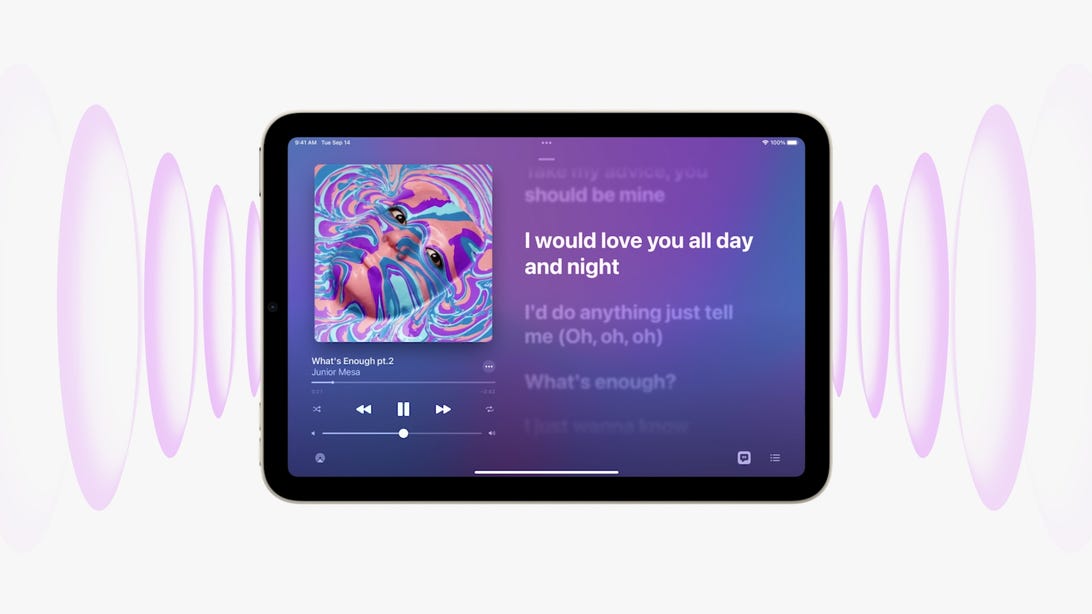
The new iPad Mini is designed to be used in landscape orientation.
Screenshot/CNETThe iPhone 13 wasn't the only product that maintained the same look and feel as previous models. Apple kicked off the 80-minute presentation with a new ninth-generation iPad, which looked identical to the previous generation.

The Apple Watch Series 7 promises a larger screen.
AppleApple pulled out a new 8.3-inch iPad Mini -- the first in two and a half years. But its biggest selling point seemed to be that Apple had merely shrunken last year's iPad Air, removing the home button and slimming down the bezel to fit a bigger screen. It comes with an upgraded 12-megapixel front-facing camera for better FaceTime video chats, support for the second-generation Apple Pencil, a Touch ID fingerprint unlock feature built into the power button and a faster A15 Bionic chip.
The only device that got a significant facelift was the Apple Watch Series 7, which got a slightly (1 mm) heftier body and slimmer bezel, making for a larger display. Over the last few years, the Apple Watch has been known to pick up new health features like an electrocardiogram, but this year's model is relying on the new body and incremental upgrades like faster wireless charging, impact resistance and dirt resistance.
"It won't matter if Apple only makes minor redesigns to its wearable products, as the company's strong brand and customer loyalty will maintain their popularity," said Rupantar Guha, analyst at GlobalData.
A different place
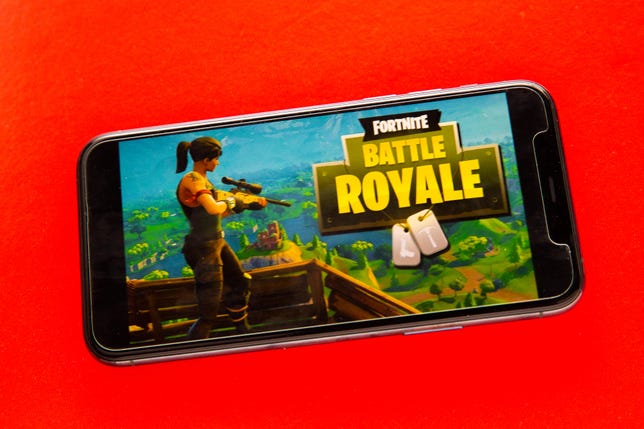
Epic's hit battle game Fortnite has created a lot of legal troubles for Apple.
Sarah Tew/CNETWhen Cook unveiled the iPhone 4S, Apple could do no wrong. Along with other tech giants, it was a darling of American industry.
The iPhone 13 arrives in a far different environment. Lawmakers are looking into whether Apple exerts too much control over its App Store, to the point of squashing competition. It just won a mixed victory against Fortnite publisher Epic in a legal tussle over app commissions, one that will likely continue, given that Epic has signaled its desire to appeal the decision. The company's also facing criticism internally, with the #AppleToo movement driven by employees hoping to push management to fix what they see as a toxic workplace culture.
None of those issues arose during Tuesday's presentation, which was focused on hardware, services and the ways Apple's products can help its customers.
And while it's unclear how much the backlash facing Big Tech -- which has smacked Google, Facebook and Amazon, too -- will have an effect on sales or the public's perception of Apple, we are far from the days when customers, partners and developers blindly worshiped at the altar of iPhones.
It's a different kind of "extraordinary time" for Apple and maybe not even one Cook could have expected.
"popular" - Google News
September 15, 2021 at 07:05PM
https://ift.tt/2YPLwuE
iPhone 13 will likely be popular because Apple still makes other phones look boring - CNET
"popular" - Google News
https://ift.tt/33ETcgo
Shoes Man Tutorial
Pos News Update
Meme Update
Korean Entertainment News
Japan News Update
Bagikan Berita Ini
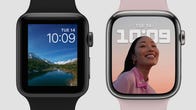















0 Response to "iPhone 13 will likely be popular because Apple still makes other phones look boring - CNET"
Posting Komentar